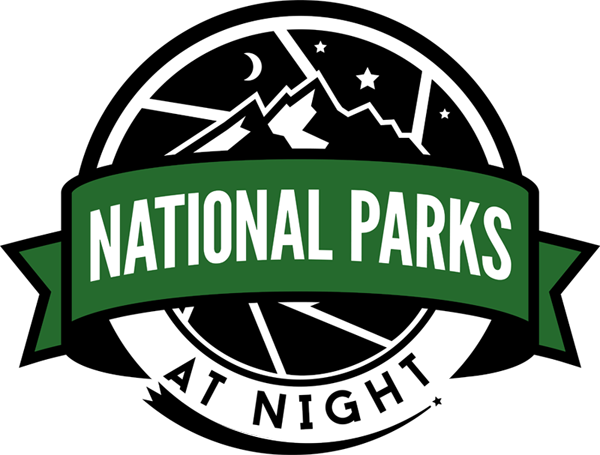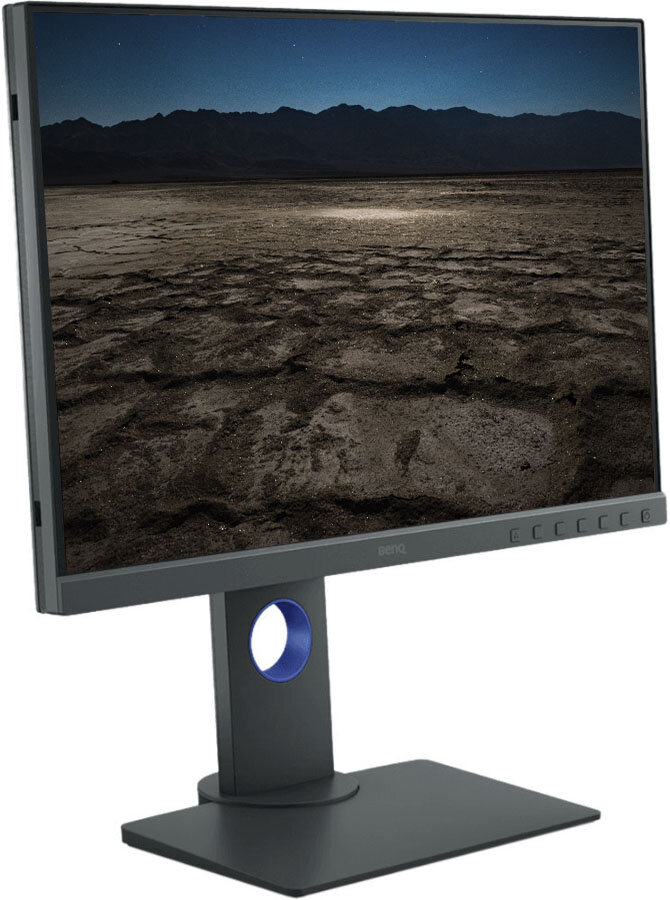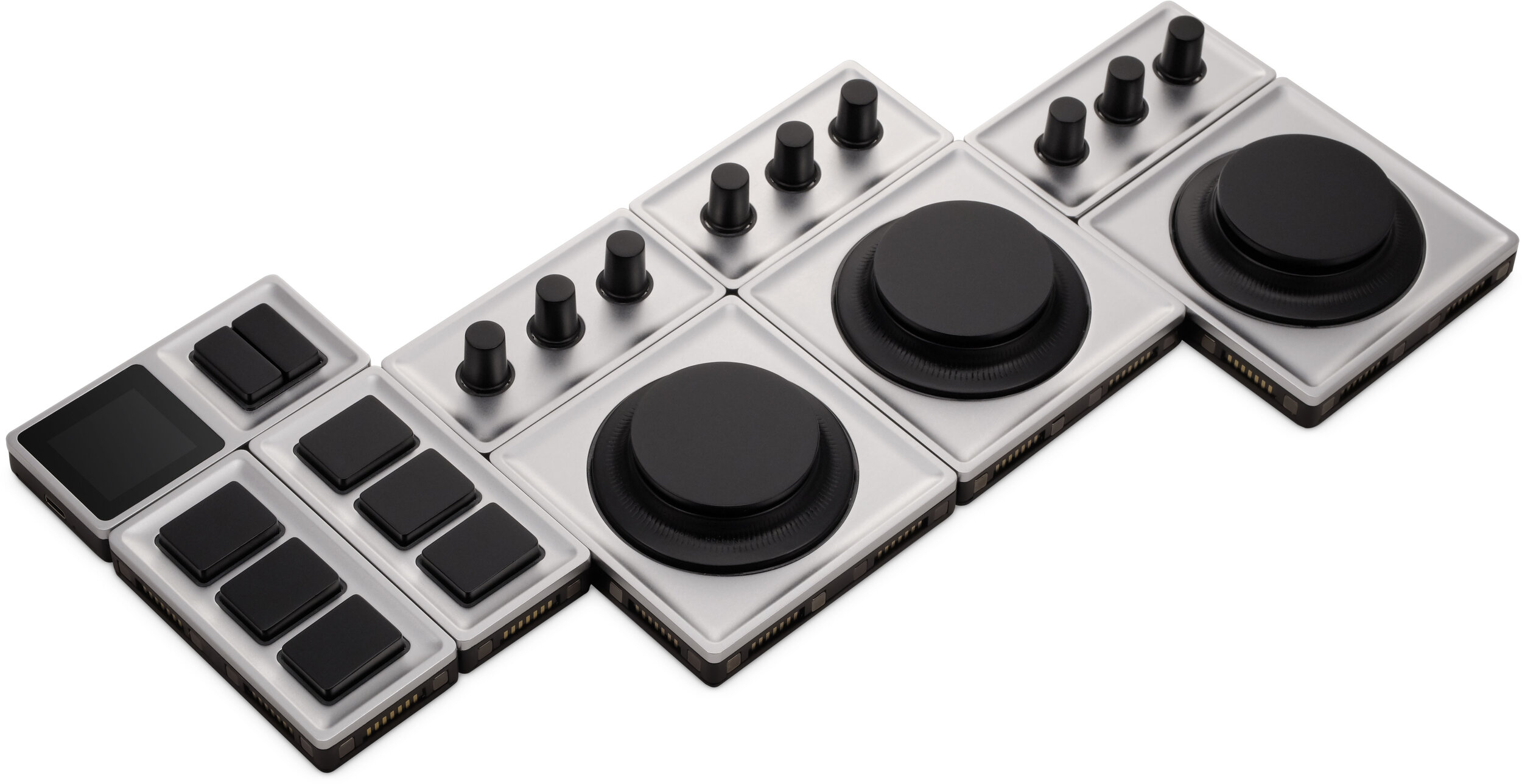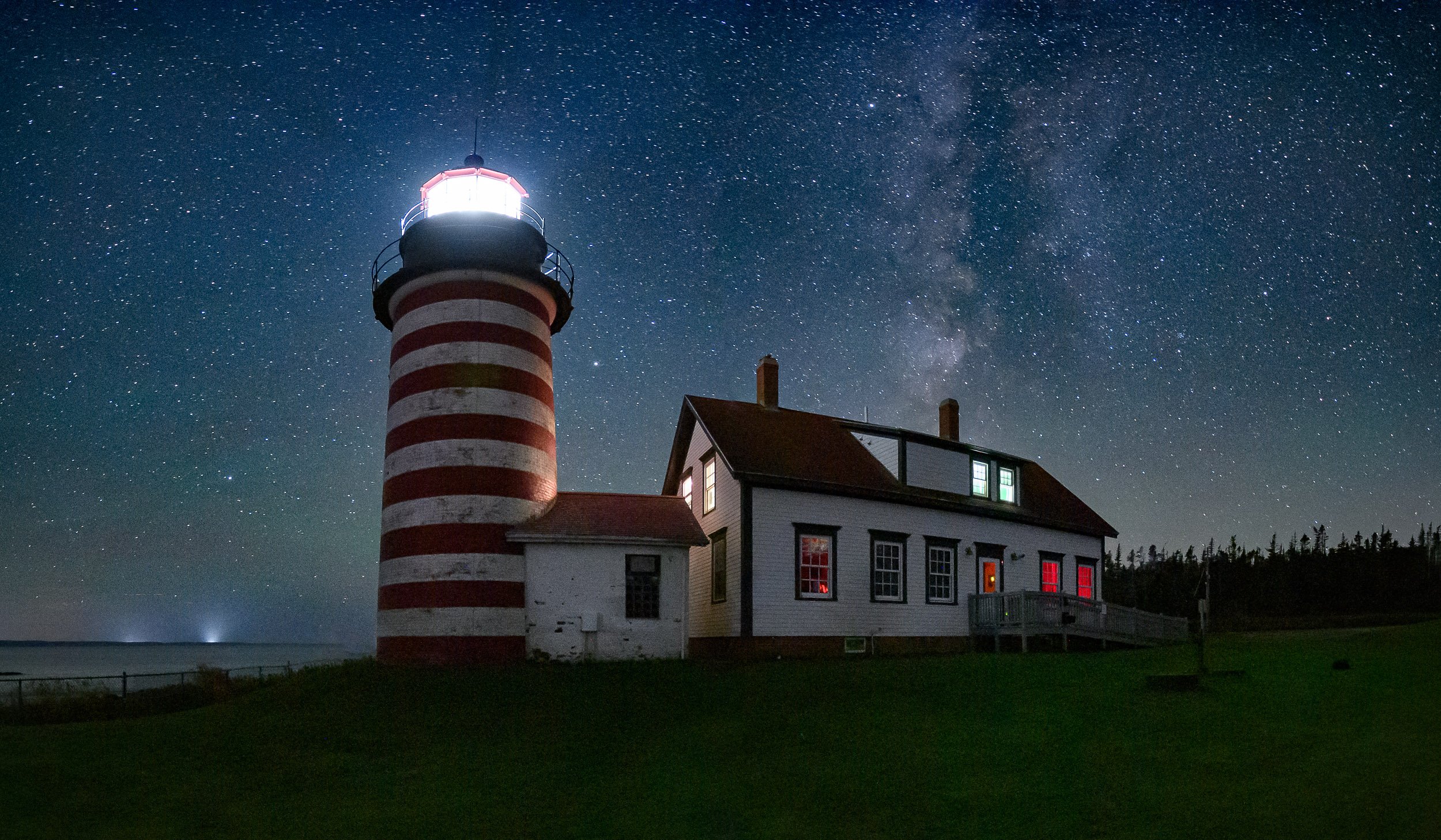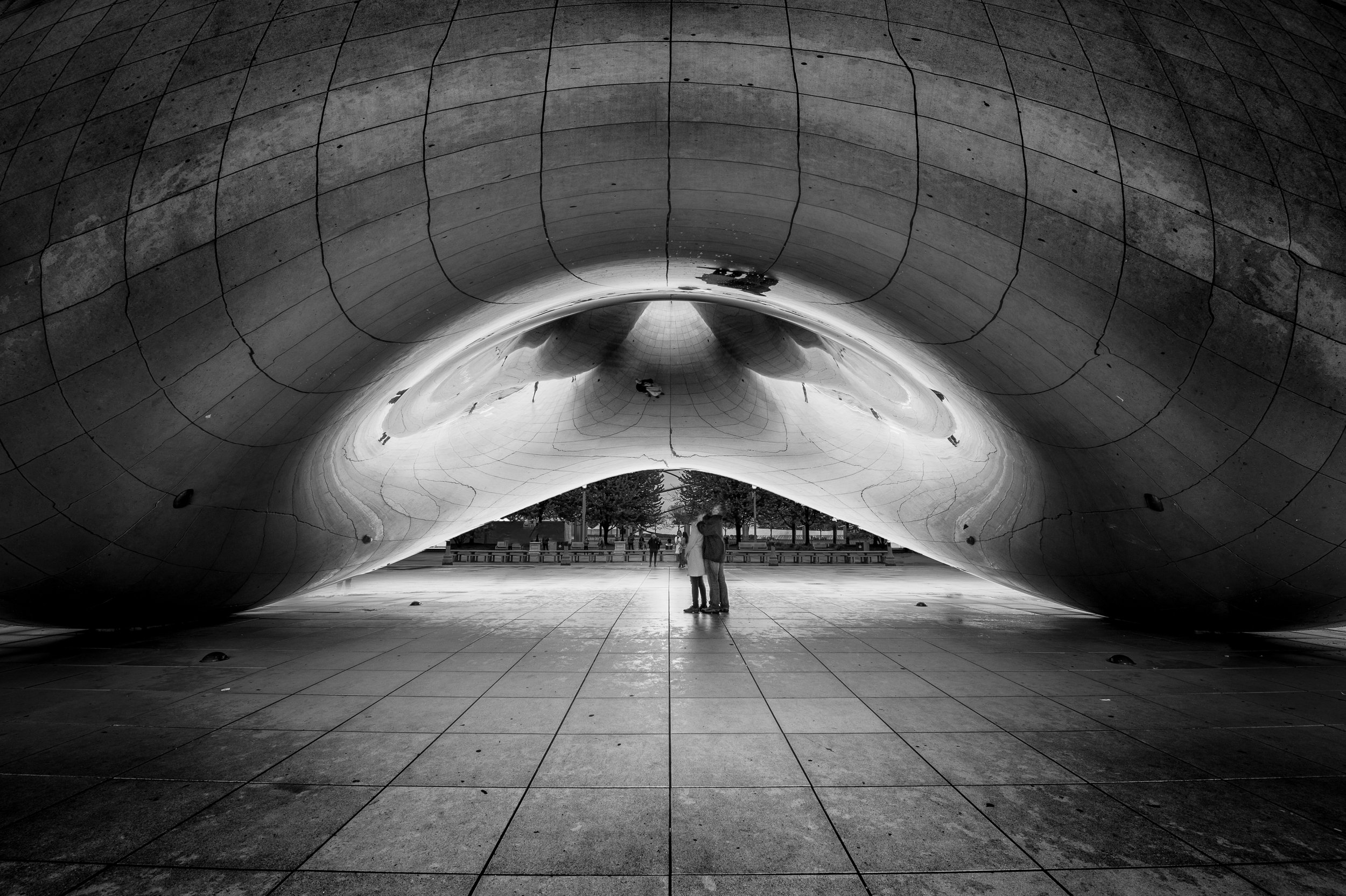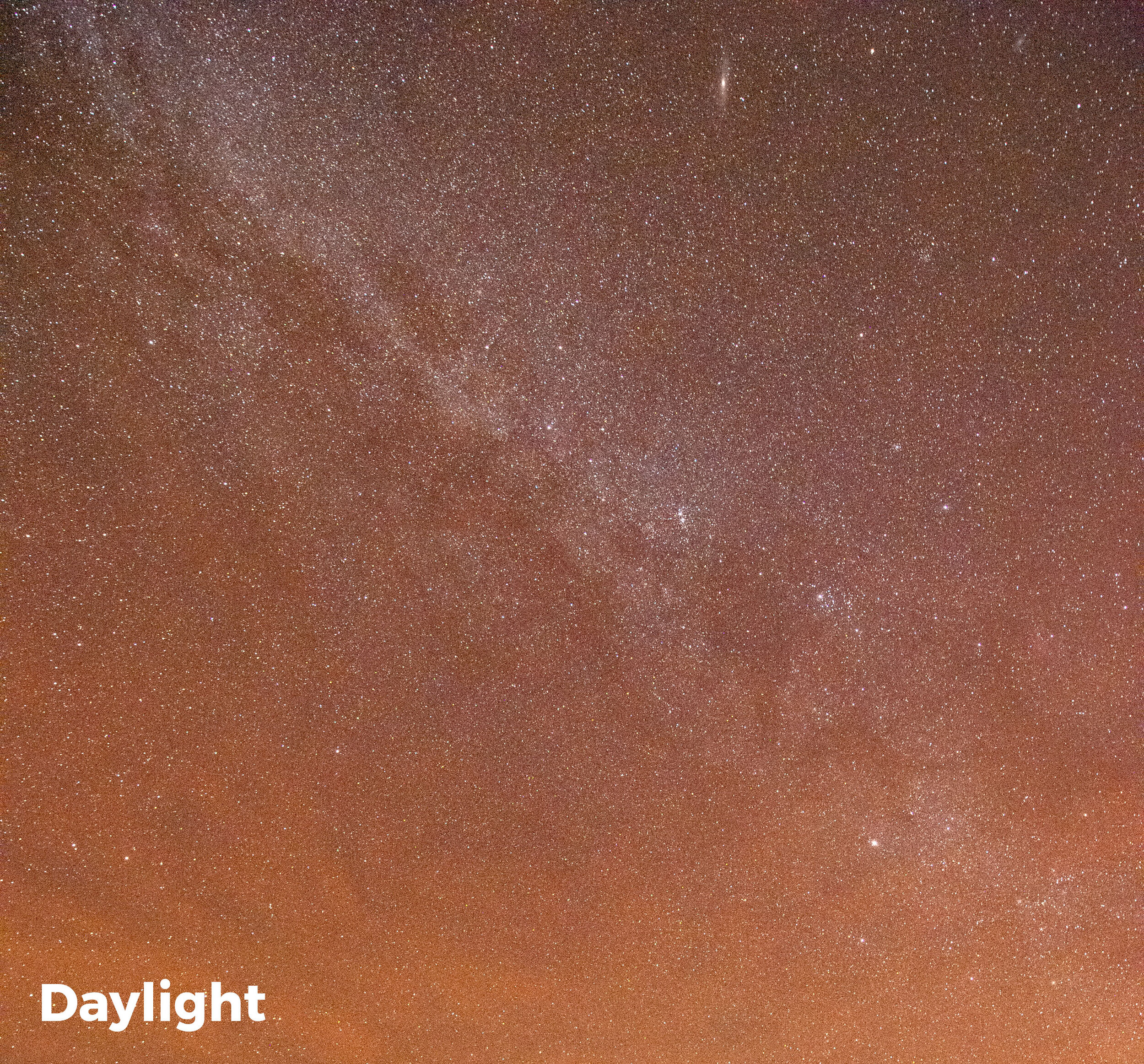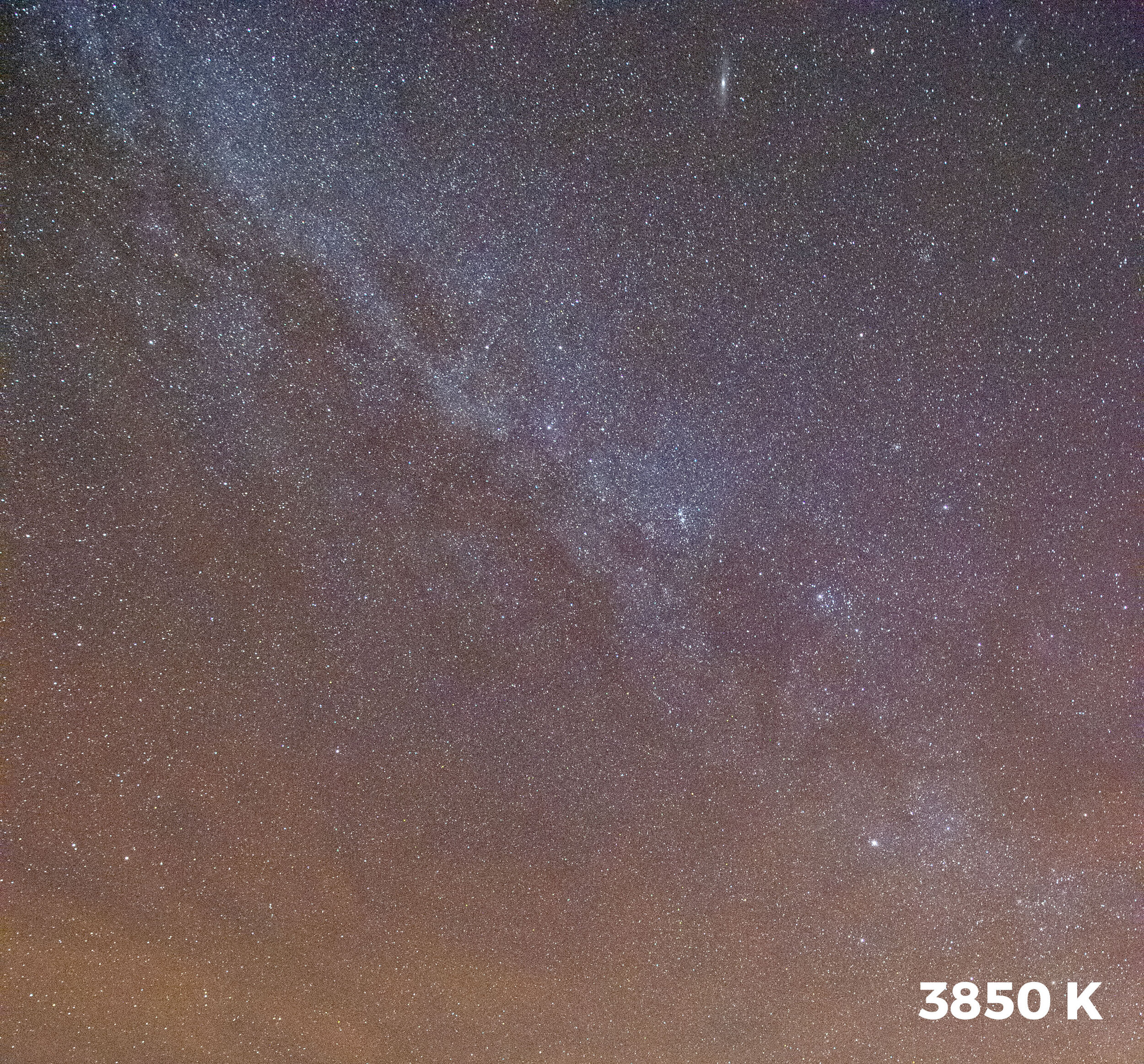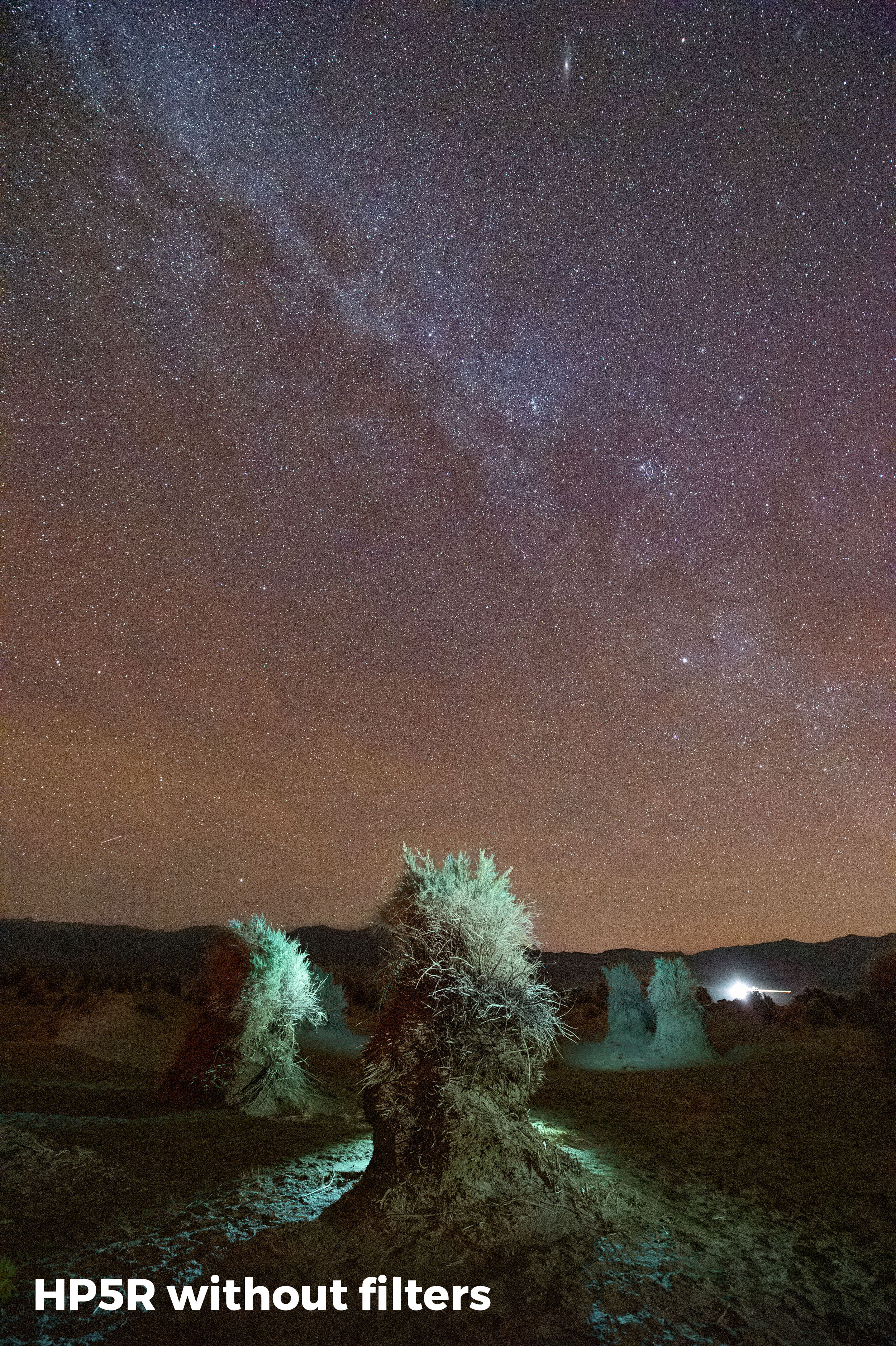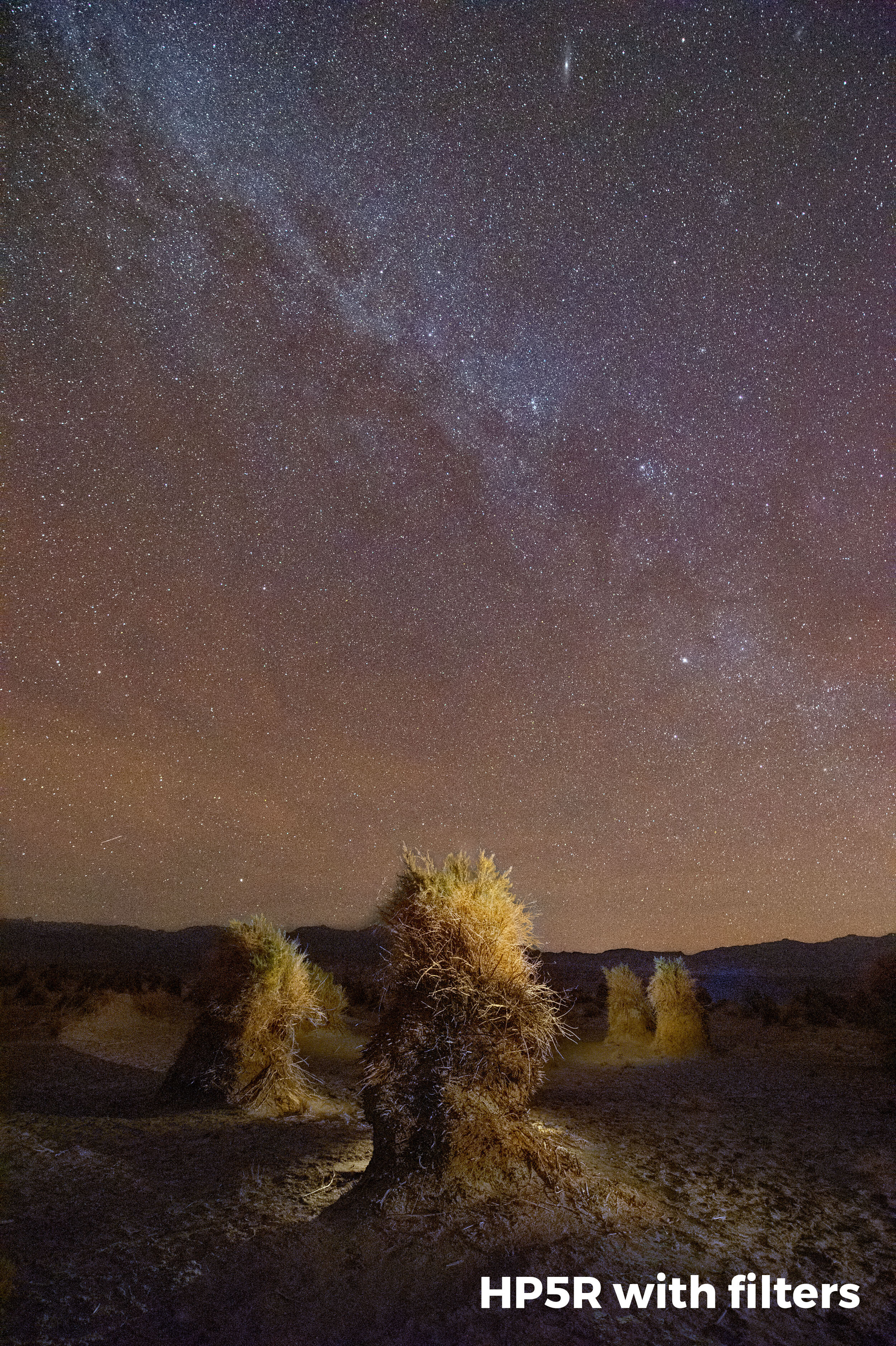It’s that time of year again. Time for snow and mistletoe, time for libations and decorations, time for cheer and time for gear.
As for the latter, you might have a wish list to add to, or you might have a photographer in your life who needs a perfect gift. Our gift to you is to be here to help.
Below you’ll find almost 50 ideas for the night photographer and/or park aficionado in your life. From apps to lenses, tripods to games, nicknacks to art—you’re sure to find something deserving of wrapping.
Note: If you decide to purchase any of the items in this gift guide, please consider using the links included, as many generate a small commission that helps us improve the National Parks at Night workshop program.
2046 Print Shop
Super Blood Wolf Moon Print
Did you freeze your tuchus off photographing the super blood wolf moon this year? Matt did. What he didn’t know is it would have been easier to just order this totally gorgeous three-color screen print instead. 2046’s supertasty design reminds us of the targeting system from the Star Wars Death Star. Despite that, we spent hours looking at it on screen—just imagining how much you’d enjoy this on the walls of your home or office. Grab it now, because this is a limited edition of only 100 prints.
Acratech
GPX Ball Head
Acratech makes the finest ball heads and their GP series has long been our favorite. New with the GPX is the ability to hold an outstanding 50 pounds! That’s double the already sufficient 25 of the GPSS model. We especially like the lever version, which adds additional security for your camera mounting. The new knob markings make it easier to operate and the overall finesse job they did on the updated lever clamp, tension and torque knobs make this the ultimate ball head.
Special offer: 10 percent B&H discount with promo code “SEIZEGIFT19.” Valid on the full line of Acratech gear from November 29 to December 7, 2019.
AeroPress
AeroPress Go Travel Coffee Press
We’ve been fans of the original AeroPress for years, and we travel with it rather than suffer through miserable hotel coffee on the mornings after night shoots. Now, just in time for the holidays, there’s the new AeroPress Go for people who enjoy fine coffee on the move. It’s compact, lightweight and durable, making it ideal for coffee lovers who wish to enjoy their favorite brewed beans while away from their kitchen. The AeroPress Go travels self-contained in its mug, making it easy to fit in a suitcase, with camping gear or in an RV. It’s a cinch to clean, and makes a delicious espresso, Americano or cold brew coffee.
Atlas Obscura
An Explorer's Guide to the World's Hidden Wonders
The second edition of Atlas Obscura’s Explorer's Guide to the World's Hidden Wonders brings the reader on an adventure to some of the world’s most fascinating and quirky places. Includes 100 new places to visit and explore while you travel the world in search of obscure adventures.
B&H Photo
Gift Card
If you don’t know what to give to the shutterbug in your life, there’s one thing that’s guaranteed to make them smile: anything at B&H. As in, the gift that gives more, a B&H gift card. Available in increments from $25 to $500, and they can be delivered directly via email in seconds.
Bay Photo
Metal Print
You know we are passionate about printing and celebrating our work, and Bay Photo is our top choice when we’re ready to put image to paper—or to other surfaces. Bay has many ways to easily share our images, be it books, cards or prints. While we love the versatility of the Xpozer print, nothing sings like a professionally done metal print. Bay has five finishes, ranging from high gloss to satin, to suit every taste.
Special offer: Save 10 percent on any size metal print using our exclusive promo code “NPANM10.” Expires December 10.
BenQ
27-Inch Display
Color management isn’t sexy. We get that, but most photographers don’t give enough thought to how their images are displayed and perceived. Starting with great hardware is a step in the right direction. BenQ 27-inch displays offer 99 percent coverage of the Adobe RGB color space for color accuracy, and come in a choice of resolutions and features. All five of us at National Parks at Night use BenQ displays to work on our images in the best possible light. Compare the options and choose the one that’s right for the photographer in your life, or take your own images to the next level with BenQ.
Special offer: B&H discount of $50 off BenQ 27-inch displays through December 2, 2019.
Chimani
National Park Guide App
Our favorite national park guide app is now available as a subscription, with elevated levels of information and service. Includes 64 detailed national park guides, GPS-enabled offline maps, over $2,500 in discounts for national park-related products and services, and more.
Coast Portland
HX5R
We love our Coast flashlights and can’t seem to get enough of them! The new HX5R is a less expensive alternative to the HP5R. It’s compact; very bright; has high, low, and strobe modes; and uses a single CR123 battery or a USB rechargeable Coast battery.
Special offer: Get 35 percent off using the code “PARKSATNIGHT” at coastportland.com.
CreativeLive
Night Photography Week Video Course
Can’t make it to a workshop this year? No problem, we’ve got you covered. Our team got together and spent a week recording our favorite night photography topics. Our Night Photography Week videos from CreativeLive covers everything from night photography fundamentals to astro-landscape photography and light painting. Great for the photographer new to night photography as well the seasoned enthusiast.
Special offer: 70 percent off all courses at CreativeLive.com, including Night Photography Week, for a limited time.
Eleanor Lutz
All the Stars You Can See Poster
The name says it all. A stellar poster depicting every star that’s visible with the naked eye from Earth, printed on semigloss paper. Options include 22x15-inch, 33x21-inch and 47x30-inch. Also available as a T-shirt, phone case, photographic print and more.
Grafo Map
Personalized Map Prints
Give Grafo an address and get a custom-designed map. It’s that simple. Choose from 11 design and six finishing options to create a print that shows exactly what/where you want. With options to customize the labels and icons, you can truly make it express a geographic moment in time.
Groove Bags
Photography Socks
No one wants to go into the field unprepared. For the photographer, socks are every bit as important as cameras and lenses. So we think it just makes good sense to have both cameras and lenses on your feet. With a premium fabric blend to enhance moisture wicking, these photography socks will keep you dry as well, all while proudly displaying the typical photographer’s aversion to fashion. Win-win.
Irix
15mm f/2.4 Blackstone Lens and Night Photography Filter
The Irix 15mm f/2.4 ultrawide-angle lens made a big splash in the night and landscape photography world when it was announced a couple of years ago, and for good reason. 15mm is a great focal length for night photography, as it allows the inclusion of lots of night sky and stars in our images. The manual focus 15mm Blackstone is wicked sharp, displays very few aberrations, is easy to focus with an infinity detent, and stays focused with its unique locking ring. Combine it with the Irix Edge Light Pollution filter to weed out light pollution from sodium and mercury vapor streetlights, and you have a powerful combination to help you seize the night.
JBL
Clip 3 Portable Bluetooth Speaker
The sounds of the nighttime world are sometimes all we need, but when you want to listen to your tunes while out photographing, the JBL Clip 3 Portable Bluetooth Speaker is just the thing. This portable speaker is designed with a built-in carabiner clip, so you can easily attach it to your backpack, belt loop or camera bag. Its rugged rubber housing protects your speaker on your nocturnal (or daytime) adventures. On a full charge, the Clip 3 gives you up to 10 hours of playback, but if you use the included micro-USB cable then you can recharge the speaker with a power bank.
Kevin Adams Photo
Digital After Dark LensMuff
A common problem experienced by night photographers is dew forming on the surface of lenses. At specific combinations of temperature and humidity, water in the air condenses on cold surfaces, and the front element of a camera lens is highly vulnerable. Kevin Adams has created a simple, secure and adaptable solution for preventing condensation on your optics. The LensMuff is a compact and lightweight wrap that can hold one, two or three hand warmers against your lens to keep it from reaching the dew point. It’s made of tough, water-resistant nylon pack cloth, and it secures quickly and easily with Velcro to almost any lens.
LaCie
Portable SSD Hard Drive
Creating the images to stack star trails or star points can quickly eat up storage space. We have been big fans of traveling with LaCie’s supersmall and insanely fast SSD drives this year, and it has definitely made a difference. Our favorite is the LaCie 2TB Portable USB 3.1 Gen 2 Type-C External SSD.
Special offer: B&H discount on select LaCie products through December 29, 2019.
LR/Timelapse
Lightroom Plugin
Creating a time lapse can be a time-consuming process. LR/Timelapse makes it easier and more seamless. Gone is the tedious step of exporting the thousands of required images from your catalog just to re-import into other software—with this brilliant plugin you can begin to create your time lapse directly from Lightroom.
Luxli
Viola² LED Light
Our favorite Low-Level Lighting LED panel got an upgrade. The Viola² features include one more LED color in the array, which means even better color rendering in CCT mode. Also included are some trippy lighting effects and 15-plus digital gel filters that allow you to match to your other light sources (such as a flashlight). This pocket-size lighting multitool is a must-have for night photography.
Middle Earth’s Maps
Lord of the Rings-Style National Park Maps
British artist Dan Bell set out on a journey: to create maps of real places in the style of J.R.R. Tolkien’s Middle Earth’s Maps. And oh boy, are they epic! Want to put a precious depiction of a favorite national park on the wall? Death Valley, Olympic, Zion, Yosemite, Yellowstone, Everglades, Isle Royale, Shenandoah and Great Smoky Mountains are all available, as are other parks around the world. And if those don’t fit the bill, Bell also accepts commissions.
Monogram
Creative Console
Our good friends at Palette Gear recently rebranded as Monogram, and they’re about to release a newly redesigned set of sleek products. The Creative Console of intuitive buttons, sliders and dials will help any photographer streamline the post-production process, whether working in Lightroom, Photoshop or other software. Ships in February, but you can buy now and give the gift of anticipation!
Special offer: $80 off all consoles at monogramcc.com through December 2, 2019.
National Geographic
Natioanal Parks Maps Collection
Beautiful to display, as well as extraordinarily useful, this boxed set of much-coveted National Geographic National Parks Trail Maps is the must-have for long backcountry hikes, or even for just driving around a national park with little to no cell service. The set includes maps from the 10 most popular parks, and are waterproof as well as tear-resistant, for years of continued enjoyment and use.
National Park Service
National Park Service Tours App
This app is a “ranger in your pocket” opportunity to listen to over 70 guided audio tours from your smartphone (both Apple and Android). Also included is a map showing both your location and available tours, as well as points of interest with location-aware geo-alerts and GPS-enabled maps. Some locations include photos and audio tours. Using this app is a great way to learn more about a destination you want to visit, and to augment your visit when you arrive.
National Parks at Night
2020 Calendar
What are you doing next year, for all 366 days? Don’t know? The National Parks at Night 2020 Calendar is here to help. Our fourth annual wall calendar will help the photographer stay inspired by and for the night throughout 2020. It’s 12x12-inches, printed on heavy-stock photographic paper, and coil-bound for easy flipping from month to month. In addition to 14 photos by the National Parks at Night instructors, the calendar includes dates for National Park Service events and holidays, astronomy holidays (yes, there are some), new and full moons, supermoons and blue moons, equinoxes and solstices, meteor showers, eclipses, and more.
Night Photography Adventure Workshop
We simply love being outdoors, teaching and helping people get great pictures. Many of our Season 5 workshops are full, but we do have a few slots open on some. Overseas destinations include the mysterious Easter Island, Norway’s Lofoten Islands and Scotland’s Orkney Islands. Looking to stay stateside? The Maine Coast is a night photographer’s dream destination, as is Virginia’s Shenandoah National Park. Or delve into the unfettered creativity of Night Portraiture, or do a deep dive into Lightroom and Photoshop with our Post-Processing Intensive.
Photography Books
Looking for some national park and night photography inspiration and education that you can always have at your fingertips? Choose from one of four books written by members of the NPAN team!
Photographing National Parks by Chris Nicholson is a portable and concise look at each of our national parks and how to best capture them. Includes best locations, times and great info on each park to help you plan your next adventure.
Have someone new to the night? Gabriel Biderman and Tim Cooper’s book Night Photography: From Snapshots to Great Shots (now in its third printing) is an introduction to night photography, and it inspires you to get out there and seize the night!
Want an even deeper dive into the night? Lance’s book Night Photography and Light Painting: Finding Your Way in the Dark has long been the ultimate tome for those interested in a deep dive into the genre! The latest edition has an amazing chapter on the history of light painting and does an excellent job of balancing theory, history and enthusiasm for taking your night visions to the next level.
Light Painting is the most creative expression in night photography, and Tim Cooper’s ebook The Magic of Light Painting is a detailed exploration of all the illuminating possibilities that can happen when we practice the craft.
Nikon
14-24mm f/2.8 Lens
If we were on a deserted night sky island and could have only one lens, it would be the Nikon 14-24mm f/2.8. Incredibly sharp with a superversatile zoom range, and suffers from very little coma when shot wide open.
Path and Oak
3D Wooden Wall Landscape Art
Featuring combinations of classic woods such as walnut, cherry, red oak and aspen, as well as exotic woods such as yellowheart, wenge and padauk, these ready-to-hang works of 3D Wooden Wall Landscape Art are an ideal gift for the parks lover on your list. Path and Oak offers designs including Hidden Lake at Glacier, Grand Teton Skies, the El Capitan ascent, Mount Rainier and more. In particular, check out Yosemite 1868, which depicts John Muir’s first visit to Yosemite Valley. Lovingly crafted and assembled in Berkeley, California.
Peak Design
Travel Tripod
Peak Design has reinvented the tripod! Gone are the round tube legs and any wasted space. Their Travel Tripod gives new meaning to the definition of compact—it’s the size of a large water bottle when fully collapsed. The carbon fiber (our favorite) weighs in at 2.81 pounds with the ball head! It also extends to 51.25 inches, or 60 inches with the center column raised. Shipping in early March.
Special offer: 20 percent off select items at peakdesign.com through December 1, 2019.
PelayoHouse
Topographic Wood Puzzle
Etsy seller PelayoHouse has transformed the terrains of some of the most beloved national parks—such as Yosemite, Grand Canyon and Great Smoky Mountains—into wooden 3D topographic puzzles. The striking result of milling hardwood plywood reveals a natural contour map. The natural grain of the wood contributes to the topographic surface. Moreover, you get to play with it and feel the surfaces as you work on assembling the puzzle with friends and family.
PhotoPills
Photo-Planning App
PhotoPills is an all-in-one app that helps photographers plan and execute their images in a wide variety of situations. Individual components (i.e., pills) track, calculate and help you visualize the paths of the sun, moon and Milky Way, as well as list the times of different twilights and magic hours. Additionally, you can use PhotoPills to determine star point exposures and hyperfocal distances, as well as to compute the parameters needed to collect sequences of images for creating time lapse videos, and with their brand new feature you can scout meteor showers! A truly dense app, this amazing tool is indispensable for any type of photography.
Special offer: 50 percent off app license at PhotoPills.com through December 1, 2019.
Phottix
Aion Wireless Timer and Shutter Release
Intervalometers are both a blessing and a curse for night photographers. They’re a blessing when they work and a curse when they don’t (which happens all too often with most). The Phottix Aion is simply the best intervalometer we’ve tested (and, ohhhh, we’ve tested many!). It comes with all the cables you might need for your camera (Nikon, Canon or Sony), it’s accurate to one-tenth of a stop (ideal when using NPF-calculated exposure times for star points), and can be used wired or wirelessly. And because the cable is removable, there is less chance of it breaking.
Poplove
Miniverse Bracelet
Poplove asserts that “You are the sun!” when you wear this Miniverse Bracelet that includes our solar system’s planets lovingly polished from semi-precious stones. Mars is pink agate, the moon is moonstone, Earth is lan ven agate, Venus is tiger eye, Mercury is howlite, Pluto is brownstone, Neptune is frosty agate, Uranus is cyan agate, Saturn is matte map, and Jupiter is brown agate. Gift someone you love with all the heavenly bodies in orbit around Sol.
Scott Kelly
Infinite Wonder: An Astronaut’s Photographs from a Year in Space
Who is the best night photographer in the galaxy? That would be astronaut Scott Kelly, who spent a year in space and then published this stellar photo book about his journey. Infinite Wonder: An Astronaut’s Photographs from a Year in Space offer an unparalleled view of our home from orbit, and it covers many topics near and dear to our heart—such as aurora, the moon, light pollution and natural weather events. Scott’s unique vocation helps him provide a perspective that few others can experience. Give the celestial dreamer on your list this book, and enjoy their delight.
Sigma
14-24mm f/2.8 Art Lens
We mentioned above that the Nikon 14-28mm f/2.8 is our favorite zoom lens for night photography, and we stand by that. But we recognize that not everyone shoots Nikon. For those folks an excellent alternative is the Sigma 14-24mm f/2.8 Art lens, which comes in Sony, Canon, Nikon, Leica L and Pentax mounts.
StoryPeople
Art Print
If you’re a people—particularly an artistic people—then StoryPeople should be part of your life. And if you’re a night photographer, or just an appreciator of the night, or even just a connoisseur of imagination, then the beautiful “Blue Squares” should be on the wall.
Syrp
Genie Mini II
Interested in doing some moving time lapse work at night? The Syrp Genie Mini II is a supercompact and easy-to-use device that also gives you room to grow. Version II adds improved Wi-Fi and Bluetooth support as well as longer battery life and a fast USB Type-C connection. The Genie interface is operated via their app. You set the panning motion and time, and away you go! Add the Pan Tilt Bracket and an additional Genie, and you have a compact panning and tilting kit.
Special offer: B&H discount of $50 through December 13, 2019.
Tafilu
Limited Edition National Parks Poster
Park nerds rejoice! This 16x24-inch poster lists all current “Big 61” national parks, in order of, and including, their creation year. A perfect display of park affection, this WPA-style poster is a great edition to any park lover’s display, or a fun way to track your own national parks journey. Thumbtacks not included.
Tentree
Constellation Juniper Hoodie
The Constellation Juniper Hoodie not only embraces the night sky but also the natural landscape. Made of organic cotton and recycled polyester, this sweatshirt is stylish and incredibly comfortable. But that isn’t even the best part—Tentree plants trees for every item sold! They have planted over 34 million trees, and their goal is 1 billion by 2030. Get something special while giving back to our planet.
TetherTools
Universal Tablet System
On a recent shoot one of our attendees brought his iPad and used his camera app to review, trigger and edit his images in the field. It was great to see the photos on a tablet screen instead of the typical 3.2-inch LCD on the camera. Nifty as it was, his setup was rather cumbersome and he could have benefited from the Universal Tablet System by Tether Tools, which lets you mount your tablet to your tripod leg for true hands-free integration. What a great way to help you trigger and review images in the field!
Tim Cooper Photography
Lightroom Training Videos
Understanding how to organize, find and enhance your images in Lightroom is an essential skill for any photographer. Produced by our colleague and noted author Tim Cooper, Lightroom Training: Library and Develop is as beneficial to the first-time user as it is to those who have been using the program for years. This 33-part, 6-hour training video starts at the very beginning with catalog creation and image organization, and ends by demonstrating high-end image enhancement. Concentrating on only the Library and Develop modules allows Tim to fully explain and demonstrate the most relevant aspects of this powerful program. Previously available only on DVD, this course is now available for download!
Special offer: Use coupon code “night” for 20 percent off until December 31, 2019.
Troy Paiva
Boneyard: SoCal’s Aircraft Graveyards at Night
One of our favorite night photography books this year was Troy Paiva’s Boneyard: SoCal’s Aircraft Graveyards at Night. Troy’s inspiring stories and images from over 20 years of shooting in these forbidden and surreal locations offer a fascinating history lesson on the broken-winged angels of the Mojave. Troy is a modern master of light painting and his multicolored vision perfectly matches his “Lost America” theme. A must-have book for any night photographer’s collection. (Purchase on Amazon via the link above, or order a signed copy directly from Troy.)
Underdog Games
Trekking the National Parks Game
Family night wouldn’t be complete without this MENSA award-winning national parks board game. Players compete by making strategic decisions to become the first to reach a national park. Interesting facts and lovely illustrations make this game fun and educational, which makes it the perfect gift for the board game or outdoor enthusiast.
Vallerret
Photography Gloves
Norwegians know a thing or two about winter. The makers of Vallerret photography gloves put their hearts and souls into keeping our hands warm. For temperatures down to about freezing, choose the improved Markhof Pro II, or for when the weather gets really cold, the Ipsoot model is a heavier duty deep winter glove. Both models have 100 percent merino wool liners and Thinsulate insulation, and Flip-Tech finger tips with magnets to hold them open while you access your camera controls. The Markhof is a slim-fit glove and runs a bit small, so consider ordering one size up, especially if you want to add a hand warmer inside.
Special offer: 10 percent B&H discount with promo code “SEIZEGIFT19.” Valid on the full line of Vallerret gear from November 29 to December 7, 2019.
Wanderer Bracelets
Custom Coordinates Bracelet
“There’s one dot on the map that holds more of your deepest memories than any other place. It’s where you fell in love, found your community, or risked it all. It’s where you were born—or reborn into a braver, stronger version of you.” We couldn’t have said it better ourselves. Handmade in Bali, these sentimental Custom Coordinates Bracelets will take your favorite coordinates and inscribe them on upcycled materials so you can wear that location always and in style. While ordering, you can also customize your color and closure.
Happy Holidays!
Just like holidays, and just like gifts, gift guides are meant to be shared! Please feel free to forward this to anyone and everyone you think might be interested. Particularly if it’s someone who buys a gift for you!
From all of us at National Parks at Night, we wish you and your loved ones a wonderful holiday season.
